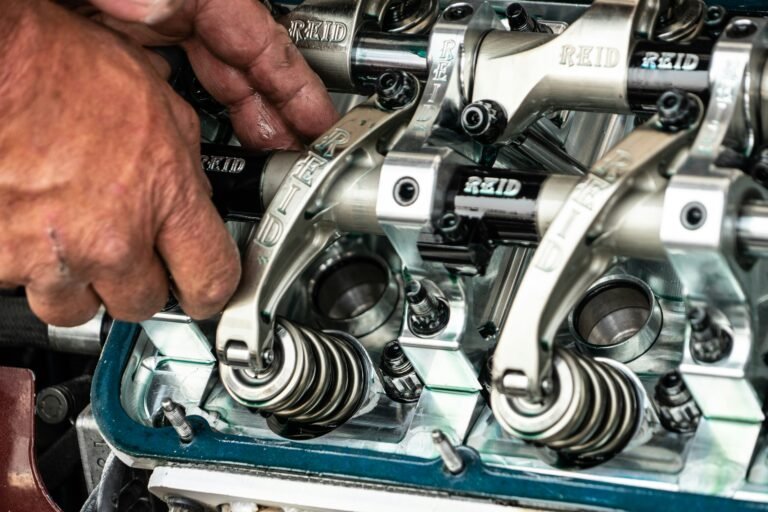Photo by Mike Newbry on Unsplash
Owning a classic car is more than just possessing a vehicle; it’s about cherishing a piece of history. Whether it’s a vintage Ford Mustang, a sleek Chevrolet Corvette, or a timeless Jaguar E-Type, classic cars evoke nostalgia and a sense of pride. However, maintaining these beauties requires a unique approach to keep them running smoothly and looking their best. Here’s your comprehensive guide to classic car maintenance, ensuring your vintage ride stays in peak condition for years to come.
Understanding Your Classic Car
Before diving into maintenance routines, it’s crucial to understand the specific needs of your classic car. Different models and years come with unique components, materials, and engineering that may not align with modern automotive standards. Research your vehicle’s specifications, and consider joining classic car clubs or forums where you can learn from fellow enthusiasts. Gathering knowledge about your car’s particular requirements will help you make informed decisions regarding maintenance and repairs.
Regular Inspections
Routine inspections are the backbone of classic car maintenance. Set a schedule for checking vital components like:
Fluid Levels:
Regularly check oil, coolant, brake fluid, and transmission fluid levels. Old seals and gaskets may leak, so keeping an eye on these fluids is essential for performance and safety.
Brakes:
Inspect the brake pads, rotors, and lines. Classic cars often have drum brakes, which require different maintenance compared to modern disc brakes. Ensure your brakes are in top condition for safe driving.
Tires:
Classic cars might come with unique tire specifications. Check tire pressure, tread depth, and signs of wear. Rotating your tires can help prolong their life and maintain even wear.
Battery:
A classic car battery can wear out quickly if not maintained. Regularly clean terminals and connections and check for corrosion.
Lights and Signals:
Ensure all headlights, brake lights, and turn signals are functioning. Vintage cars may require special bulbs, so keep spare bulbs on hand.
Engine Care
The heart of your classic car lies within its engine. Here are some essential tips for keeping it running smoothly:
Oil Changes:
Regular oil changes are crucial. Use the oil type recommended for your engine and change it every 3,000 to 5,000 miles, or at least once a year if you drive less.
Air Filters:
Replace air filters regularly to ensure proper airflow and engine efficiency. A clean filter helps improve fuel efficiency and engine performance.
Cooling System:
Monitor the radiator and cooling system. Flush the system and replace coolant as needed to prevent overheating, especially during warmer months.
Fuel System:
Use high-quality fuel and consider adding a fuel stabilizer, especially if you store your car for extended periods. Clean fuel lines and replace filters regularly to prevent clogs.
Body and Interior Maintenance
A classic car’s aesthetic appeal is just as important as its mechanical health. Proper body and interior care can enhance its value and longevity:
Wash and Wax:
Regularly wash your car to remove dirt, grime, and pollutants. Waxing every few months helps protect the paint and keeps it shiny.
Rust Prevention:
Inspect your car for rust, particularly in hidden areas like the undercarriage. Treat any rust spots immediately to prevent further damage.
Interior Care:
Use appropriate cleaners for leather and upholstery. Regularly vacuum and condition seats and carpets to keep them in pristine condition.
Storage:
If you’re not frequently using your classic car, think about utilizing a climate-controlled car storage facility in Oklahoma City. This will safeguard your vehicle from extreme temperatures, humidity, and direct sunlight.
Documentation and Records
Maintaining accurate records of your car’s maintenance and repairs is crucial. Keep a detailed log of:
- Oil changes and other routine maintenance
- Repairs and parts replacements
- Mileage and usage
Having a comprehensive history can aid in troubleshooting issues and add value when it comes time to sell.
Seeking Professional Help
While DIY maintenance is rewarding, some tasks are best left to professionals. Find a mechanic who specializes in classic cars and understands their unique needs. They can provide insights, perform complex repairs, and help you navigate restoration projects.
In Conclusion
Classic car maintenance is a labor of love that requires dedication, knowledge, and attention to detail. By understanding your vehicle’s specific needs, conducting regular inspections, and maintaining both mechanical and aesthetic aspects, you can ensure your classic car remains a joy to drive and a source of pride for years to come. Remember, these cars are more than just modes of transport; they are cherished pieces of history that deserve the utmost care. So, roll up your sleeves, dive into the world of classic car maintenance, and keep the spirit of the classics alive!





